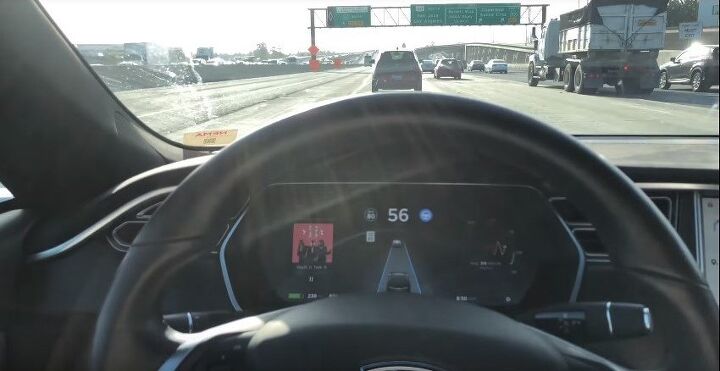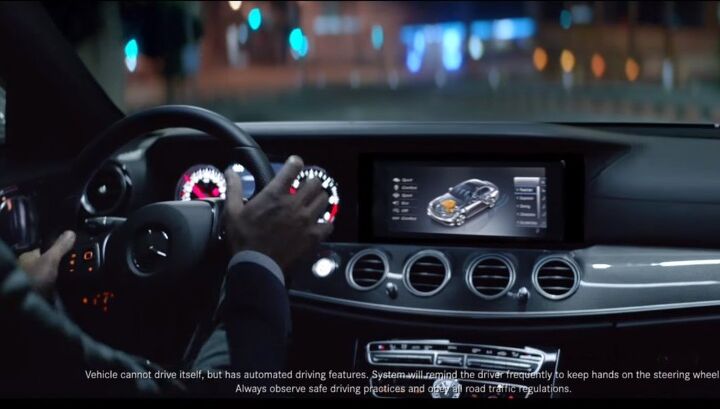#DriverAssistanceTechnology
QOTD: Feeling Less Than Optimistic About Hands-off Driving?
Sorry for another winter-themed post, but real life has a way of pointing out weaknesses in man’s systems. If you’re enjoying life down in Del Boca Vista, Phase III, this should provide some amusement.
Here goes: It’s a mess up north. Mother Nature’s not asking consent, and the roadways around Casa Steph are dirtier than a roadhouse brothel floor at 3 a.m. The last couple of weeks has brought snow, rain, freezing rain, more snow, and a type of precipitation that can only be described at #4 birdshot fashioned out of ice, hurled straight into your eyes via a bitter wind.
As me about my test vehicles’ driver assistance features, and how these bits of technological wizardry worked in such adverse conditions. News flash: they’re often as good as useless. You know what they say about mammaries on a bull…
The Message Isn't Getting Across - Drivers Still Think Too Highly of Gee-whiz Driver Assist Features
American safety advocates have long cautioned motorists and manufacturers that poor communication leads to unrealistic expectations of driver assist systems, thus putting lives in danger. The Europeans are waking up to this reality, too.
Despite an ever-growing list of standard tech in new cars, customer bewilderment hasn’t waned, a new study shows. You’d be alarmed (but perhaps not surprised) by the number of people who think self-driving cars are already on the market.
How Safe Is Level 2 Autonomy? As Safe as the Automaker Makes It
No longer content with just crashing vehicles into walls or poles, the Insurance Institute for Highway Safety has turned its attention to the ever-expanding buffet of new technologies found in today’s automobiles. Driver assistance features ease the driver’s workload and make for comfortable highway cruising, but all systems aren’t made equal.
For its test of “Level 2” autonomous features — meaning, specifically, adaptive cruise control (ACC) and active lane-holding — IIHS selected five premium four-doors. The test group consisted of a 2017 BMW 5 Series with Driving Assistant Plus, a 2017 Mercedes-Benz E-Class with Drive Pilot, a 2018 Tesla Model 3 and 2016 Model S equipped with Autopilot, and a 2018 Volvo S90 with Pilot Assist. Given that each model garnered a “superior” IIHS score for automatic emergency braking, they seemed like choice candidates for a comparison test.
The results, as you’d probably expect, were a mixed bag. We’re not at the technological finish line yet; not by a long shot.
Maybe Tesla Vehicles Could Use a Seat-shaker Feature…
Hell, maybe they could use a driver monitoring camera, too. In other words, Cadillac’s Super Cruise system. How else would one react to seeing this video of a Tesla employee apparently dozing behind the wheel of a Model S while flying down a California highway?
The video, uploaded by YouTube user Mike Cagulada and posted on Twitter by Amir Efrati of The Information, was apparently shot near Tesla’s Fremont assembly plant on June 4th. By the looks of it, this driver isn’t bobbing for apples — he or she is asleep.
Enthusiast Groups Unsure How to Best Handle Crash Avoidance Technology on Track Day
For the most part, crash avoidance and driver assistance technology is a welcome addition addition to the automotive landscape. While they can be a little invasive sometimes, they’re usually doing what they’re supposed to and helping to save the lives of drivers who may have had a momentary lapse in judgment or focus. However, there is a lot of worry over how lane assistance or emergency braking software will behave when you bring a streetcar to the track.
Several chapters of the BMW Car Club of America and the Porsche Club of America have already decided to forbid any vehicle equipped with aids. The fear is that track day organizers or instructors could be found liable if a car suddenly jerks right when it approaches the apex of a corner or suddenly decelerate when in close proximity to other vehicles. A driver might be caught off-guard if a car unexpectedly takes over and be unsure how to mitigate inputs they were unprepared for.
The bottom line is that newer cars are finding themselves in danger of being banned wholesale, and that’s just not going to work if track days are to continue in the years to come.




















Recent Comments